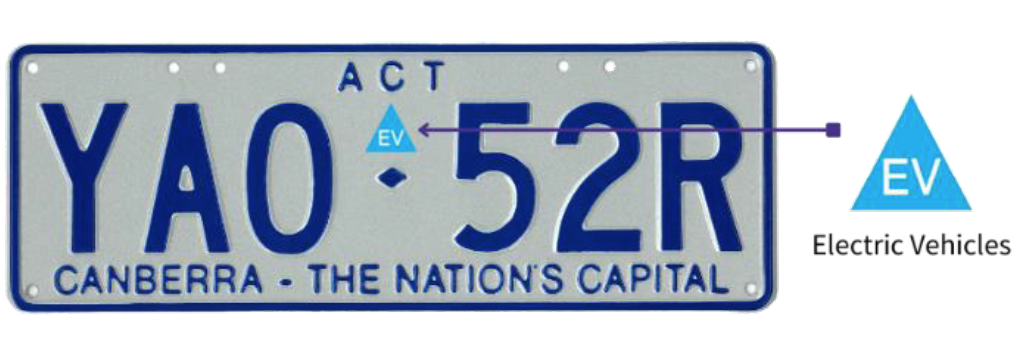Electric vehicles (EVs) are becoming more common as consumers select greener transport options. EVs commonly contain lithium-ion batteries and come with associated risks and hazards (including fire and explosion, radiation, heat, chemical and electrical).
To minimise risk from an EV
- ACTF&R recommend that where possible Electrical vehicles are parked outside in the open air or in a sprinkler protected building.
- ACTF&R recommends that a smoke alarm or a heat alarm is installed in Class 10a buildings (i.e. private garages) where an EV is regularly parked or charged. We recommend having a licenced electrician install interconnected mains-powered devices where possible. Check with the manufacturer or distributor to ensure device models are compatible for interconnection.
- Make sure that your EV is identifiable by emergency services. There should be a blue “EV” sticker/badge on the number plate to indicate that it is an electric or hybrid vehicle. These stickers are there specifically to warn emergency responders of the presence of a high voltage battery.

- There are important considerations when installing charging equipment in residential buildings. Please refer to the Fire Safety Guideline – Electric Vehicles (EV) and EV Charging Equipment in the Built Environment.
- Do not charge an EV that has been subject to any suspected damage, for example any collision, impact by road debris, immersion in flood waters, etc.
- Bollards or mechanical protection devices should be installed in front of charging equipment or home batteries to prevent accidental damage from a vehicle impacting the equipment.
- Home fire sprinkler systems may be effective in controlling or reducing the impact of a fire in a garage. Information about home fire sprinklers is available at Home Fire Sprinkler Coalition Australia (homefiresprinklers.org.au)
- Specialised charging equipment must be installed by a licenced electrician.
- If charging from a GPO only use extension leads and power sockets that are intended for use in the charging of electric vehicles.
If an incident occurs involving an EV
- Act quickly and make sure the parking brake is engaged and the vehicle is switched off before evacuating the vehicle of all passengers.
- Keep clear of the vehicle and warn passers-by to keep at a safe distance (at least 30 metres), even if there is no visible smoke, vapours or flames.
- Call Triple Zero (000) and inform the operator that the vehicle involved is an EV. Clearly detail the make and model of the vehicle, which will allow responders to access additional emergency information specific to the vehicle.
- Ensure that remote keys cannot inadvertently start the vehicle.
If anyone has been exposed to spilled electrolyte, flying debris, smoke or vapours, or flames, seek urgent medical assistance. Burns should be immediately treated with cool running water for 20 minutes. Burns larger than a 20-cent piece require emergency care. Treat with cool running water immediately, and seek medical care.
Damaged electric vehicles (EVs)
- An electric vehicle that has been involved in a collision, a fire, or has been submerged, must be treated with caution as the high voltage battery pack may be compromised. Damaged EV batteries may ignite hours, days, or even weeks after the initial incident.
- Damaged EVs should be kept in an open area at least 15 metres from other vehicles, buildings, and/or other exposures.
- Contact the sales point, service point or vehicle manufacturer for advice.
- Do not charge or use the vehicle unless it has been inspected and cleared by a qualified technician.
